Kedves Olvasóink!
Havonta frissülő könyvajánló rovatunkkal a könyvtárunkba frissen érkezett kiadványokra szeretnénk felhívni a figyelmüket. A könyvek kölcsönözhetők, hozzáférhetőségükről az online katalógusban informálódhatnak, további felvilágosítást a könyvtárosoktól kérhetnek.
A könyvtár nyitva tartásáról és a kölcsönzés feltételeiről a könyvtár oldalán tájékozódhatnak.

Ethne Barnes: Atlas of Developmental Field Anomalies of the Human Skeleton: A Paleopathology Perspective
Hoboken: Wiley-Blackwell 2012
Raktári jelzet: R-40.009/2021
Nyelv: Angol
Written by one of the most consulted authorities on the subject, Atlas of Developmental Field Anomalies of the Human Skeleton is the pre-eminent resource for developmental defects of the skeleton. This guide focuses on localized bone structures utilizing the morphogenetic approach that addresses the origins of variability within specific developmental fields during embryonic development. Drawings and photographs make up most of the text, forming a picture atlas with descriptive text for each group of illustrations. Each section and subdivision is accompanied by brief discussions and drawings of morphogenetic development.
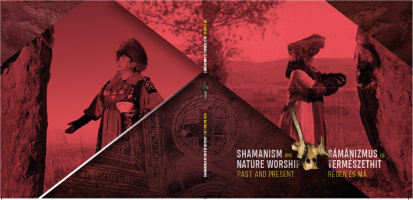
Pásztor Emília (szerk.): Shamanism and nature worship: past and present
Baja: Türr István Múzeum 2017
Sorozat: (Bajai dolgozatok 23)
Raktári jelzet: R-39.847/2021
Nyelv: Angol
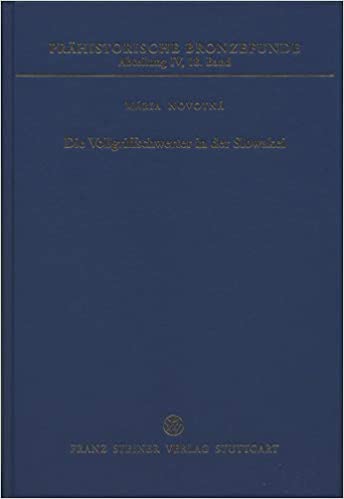
Mária Novotná: Die Vollgriffschwerter in der Slowakei
Stuttgart: Franz Steiner Verlag, 2014
Sorozat: (Prähistorische Bronzefunde IV.Abt. 18.Bd )
Raktári jelzet: 28.000/IV:18 R-39.976/2021
Nyelv: Német
Diese Arbeit von Mária Norotná ergänzt die bereits publizierten PBF-Bände der Abteilung IV über das östliche Mitteleuropa um die westliche Grenze des Karpatenbeckens. Erstmals werden alle rund 180 bisher bekannten vollständig oder in Bruchstücken erhaltenen Schwerter der Bronze- und Urnenfelderzeit zusammenfassend präsentiert, wodurch ein wichtiger Überblick über die gängigen Formen und Typen in diesem Gebiet entsteht. Die Gliederung der Vollgriffschwerter erfolgt hier in erster Linie anhand der Form der Griffe sowie deren Befestigung und Verzierung. Beginnend mit den frühen Vollgriffschwertern der älteren Hügelgräberzeit behandelt die Autorin die unterschiedlichen frühurnenfelderzeitlichen Schwerter. Den Abschluss bilden Antennenschwerter der jüngeren Urnenfelderzeit, gefolgt von einem Exkurs über Schwertfälschungen innerhalb der Slowakei. Der auswertende Teil beleuchtet nicht nur die Forschungsgeschichte, sondern behandelt auch die chronologische Entwicklung der Schwerter, die Produktionsstätten innerhalb der Slowakei sowie Funktion und Bedeutung von Schwertern im gesellschaftlichen und kultischen Zusammenhang.
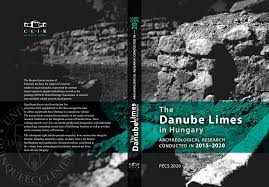
Gergő István Farkas, Réka Neményi, Máté Szabó (eds): The Danube limes in Hungary: archaeological research conducted in 2015-2020
Pécs: CLIR Research Center 2020
Raktári jelzet: R-40.014/2021
Nyelv: Angol
The study of Roman frontiers has been a pivotal subject of the academic hub at Pécs for long decades. Its researchers were pioneers of Hungarian aerial archaeology (Aerial Archaeological Archive of Pécs), and have been conducting archaeological excavations and complex non-invasive surveys throughout the Ripa Pannonica. Associate researchers provided the scientific background for the UNESCO World Heritage Nomination of the Hungarian section of the Danube Limes. The Archaeology Department at the University of Pécs has been a prominent agent of Roman provincial archaeology in Hungarian higher education. This volume is a continuation of the work long begun. We strive to promote Roman frontier studies by organizing workshops, hosting public venues and providing channels to publish recent findings concerning the limes. This publication, available both as a hardcover book and a digital issue, offers insight into exciting and valuable research novities previously unpublished. In the future we aim to continue this tradition and regularly publish recent research results on the Roman limes. We also aspire to complement traditional publications with flexible and up-to-date online data collection. The Frontiers of the Roman Empire is a unique academic subject. It is a vast historic complex encompassing a multitude of monuments and sites of varying complexities and features, over different social and geological landscapes spanning three continents and more than five centuries. This inherent complexity of Roman frontiers is coupled by a divergent research history, resulting in inevitable bias. These difficulties have been recognized by previous research, but only the digital era brought about a set of solutions to overcome them. To address and resolve these preexisting conditions, one must treat Roman monuments and sites in an adaptable, complex yet manageable framework, which promotes future redefinitions, meeting the needs of continuously expanding knowledge on its subject of study.
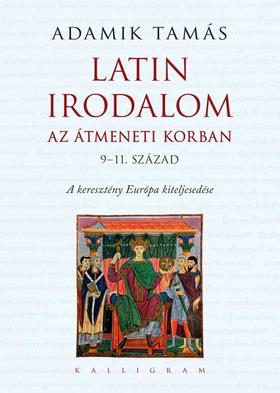
Adamik Tamás: Latin irodalom az átmeneti korban (9-11. század): a keresztény Európa kiteljesedése
Budapest: Kalligram Kiadó 2020
Raktári jelzet: R-40.013/2021
Nyelv: Magyar
A Latin irodalom az átmeneti korban (9-11. század) című könyv három újdonságot rejt. Az első, hogy a latin nyelv új területeket hódít meg, s eljut egészen az Északi-tengerig. A második, hogy a 10. században, bár a szakirodalomban korábban sötét vagy homályos századnak nevezték, egy sor új irodalmi műfaj jelenik meg: a szekvencia, a történeti és állateposz, a lovagregény, valamint a nemzeti történetírás. A harmadik pedig, hogy a magyarok ebben a században alapítanak államot a Kárpát-medencében, markáns nyomot hagyva a korabeli latin irodalomban is. Mit takar ez az utóbbi megállapítás? Egyfelől azt, hogy e korszak különböző országainak írói és költői - az itáliaiak, a gallok, a germánok - sokszor emlegetik műveikben a kalandozó magyarokat. Másfelől viszont azt, hogy az államalapítás korában Magyarországon is művelni kezdik a latin nyelvű irodalmat, olyan kiemelkedő alkotásokkal gazdagítva azt, mint Szent István Intelmei vagy Szent Gellért Elmélkedése.
Adamik Tamásnak a középkori latin irodalmat feldolgozó könyvsorozata harmadik kötetéhez érkezett. Az ELTE Latin Tanszékének professzor emeritusa az egyetemen a kilencvenes években általa szervezett Középkori filológiai program előadójaként kezdett foglalkozni a témával, a jelen kötet az azóta eltelt bő negyedszázad kutatásának gyümölcse. A kora középkor és a Karoling-reneszánsz után most az irodalomtörténetben méltatlanul mellőzött úgynevezett átmeneti kor szerzőit tárgyalja, közöttük az első magyarországi latin nyelvű művek alkotóit. Immár hagyományosan gazdagon idéz az eredeti forrásokból, és bőséges irodalomjegyzékkel segíti az érdeklődő olvasót.
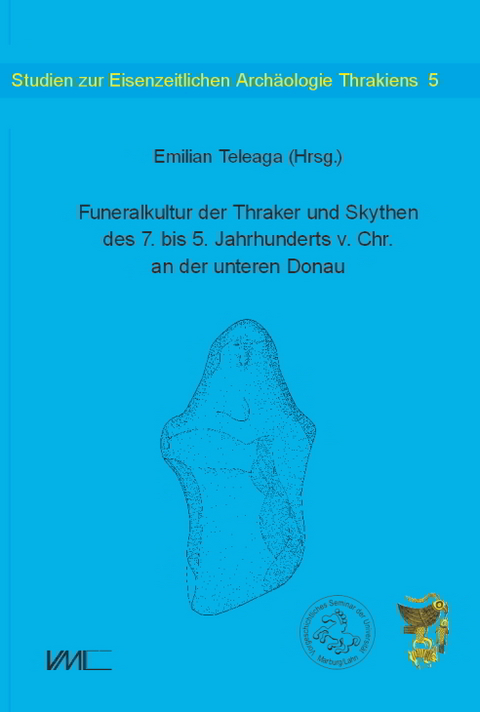
Emilian Teleaga (Hrsg.): Funeralkultur der Thraker und Skythen des 7. bis 5. Jahrhunderts v. Chr. an der unteren Donau
Rahden/Westf.: Verlag Marie Leidorf 2020
Sorozat: Studien zur Eisenzeitlichen Archäologie Thrakiens 5
Raktári jelzet: R-40.017/2021
Nyelv: Német
The volume contains 2 forewords and 17 papers including first results of the UEFISCDI project Funeral culture and burial rites of the Late Hallstatt Period at the Lower Danube conducted by Emilian Teleaga at the Archaeological Institute of the Romanian Academy, which were presented, together with related research, at an international conference for the 90th anniversary of the Prehistoric Institute at Philipps University Marburg from 30th Nov. to 2nd Dec. 2017. The contributions deal with the excavation method and reconstruction of Scythian kurgans and chamber tombs, historiographical problems with 7th- to 5th-century archaeological finds, the Hallstatt palaeo-environment of the E-Romanian Subcarpathians, surveys on the DumbravÄ Plateau, the Late Hallstatt necropolis at BârseÅti, its tumuli excavated by S. Morintz and faunal remains, female burials of the Scythian period with weapons, funeral rites and anthropology at TeliÅ£a, Greek graves in the western Pontic region, the cemetery at Valea Stânii, Early Iron Age burial customs in South-Western Transylvania and Northern Serbia, the tumuli Royal Chairs at Atenica, and funeral customs of the Alföld Group or Vekerzug Culture, respectively.

Robert Fürhacker, Daniel Modl: Der Kultwagen von Strettweg: eine Objektbiographie : Restaurierung und Rezeption einer archäologischen Ikone
Graz: Universalmuseum Joanneum 2021
Sorozat: Beiheft, Shild von Steier
Raktári jelzet: R-40.023/2021
Nyelv: Német
Der Kultwagen von Strettweg (auch Strettweger Opferwagen) ist ein im 7. Jahrhundert v. Chr.gefertigter bronzener Kultwagen, der 1851 beim Planieren eines Fürstengrabs der Hallstattkultur in Strettweg bei Judenburg in Österreich gefunden wurde. Neben dem Wagen wurden weitere Grabbeigaben, wie Schmuck und Amphoren aus Bronze, eiserne Waffen und Zaumzeug gefunden.
Der 46,2 cm hohe Wagen besteht aus einer viereckigen, durchbrochenen Grundplatte mit vier Speichenrädern. Zentral auf dem Wagen steht eine etwa 32 cm hohe weibliche Gestalt, die mit erhobenen Händen einen schalenförmigen Gegenstand trägt. Neben ihr wird die Schale durch zwei scherenförmige Stützen gehalten. Auf der Schale ruht ein nahezu halbkugeliger Kessel, der von einem durchbrochenen Rand mit schneckenförmigen Verzierung abgeschlossen wird. Neben der Kesselträgerin stehen zahlreiche weitere Figuren in Form von stehenden und berittenen Menschen sowie pferde- und hirschähnlichen Tieren. Die dargestellte Szene wird als Opferszene interpretiert. Der Wagen diente vermutlich als Kultobjekt, zur Aufnahme von Trankopfern.
Der Strettweger Opferwagen wurde 2009 restauriert und steht im Original im Archäologiemuseum Schloss Eggenberg, Teil des Universalmuseums Joanneum in Graz. Eine Kopie ist im Museum Murtal in Judenburg ausgestellt. Im Jahr 2012 wurden im Bereich des Fundortes weitere Grabungen gestartet und es konnte auch ein weiteres Fürstengrab gefunden werden.




